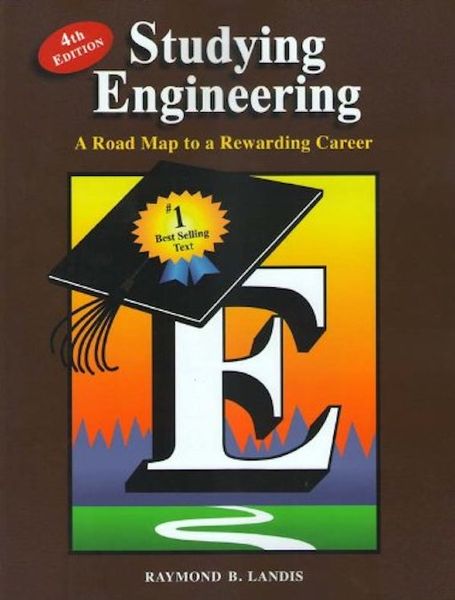
This week’s selection is “Studying Engineering: A Road Map To A Rewarding Career” by Raymond B. Landis.
There are plenty of books ABOUT engineering, but how do you BECOME an engineer?
The answer is clearly to become an engineering student and get yourself through one of many highly qualified programs around the world at various institutions.
But how, exactly, do you do that? What are the best practices of being an engineering student? There may be books about the science and practice of the engineering itself, but this book takes it up a level to examine the student process.
Becoming an engineer is a difficult process, and it should be: engineers are those who design our buildings, machines and civic works. Our very lives depend on these individuals doing their job at the very best level.
To achieve those high levels, the engineering programs are made to be challenging so that only those truly able to get through them can qualify as engineers.
While you cannot change these programs or their nature, you can adopt some best practices to help you get through them in the most efficient and effective way.
The book explains the “keys to success” and the history of engineering, as well as the rewards and opportunities of being an engineer, prior to getting down to the best practices.
Landis explains the details of the learning process, so that students can recognize and adapt their actions to fit into that process. You can’t adapt unless you know your target.
Along with engineering itself, there are a number of related disciplines required to succeed, including mathematics, chemistry and others. Landis explains several “success strategies” one can use to more effectively learn those disciplines.
One area of particular interest is what Landis calls “personal development”. This is a critical skill that is required by anyone leaving an educational institution to face the world alone. Unfortunately it is all too often not taught in any way by these institutions. Landis dedicates a chapter to this topic, which should greatly assist fresh engineers when they hit the job market and beyond.
Finally, Landis spends some time explaining how activities beyond the classroom can greatly assist the development of a budding engineer. These might include part-time jobs, student organizations, travel and much more.
If you’re considering a career in engineering that will make use of 3D printing, this book should be a must-read. In fact, over 150,000 students have already used it to succeed in their careers.
We’re an Amazon Associate and earn a small fee from qualifying purchases. Help support our 3D print news service by checking out this book!
Via Amazon
